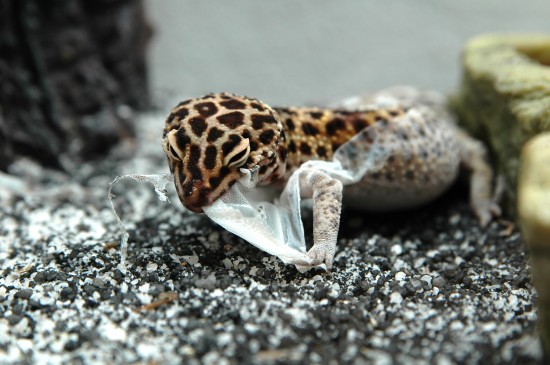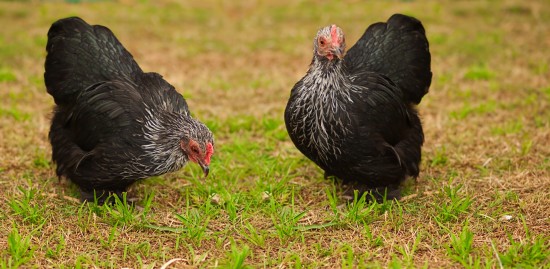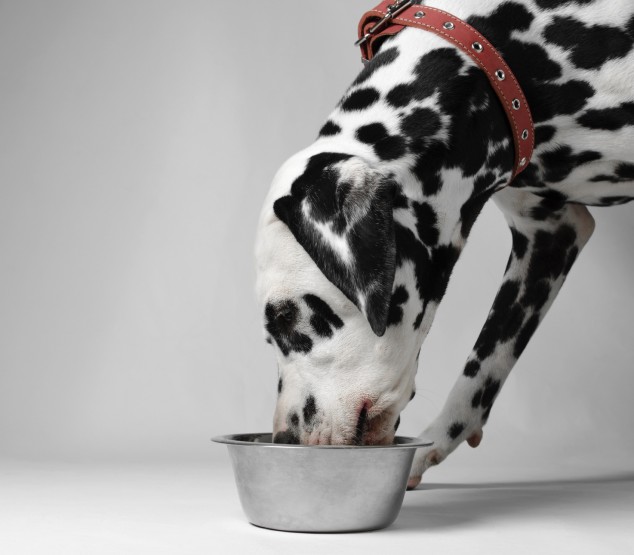Cushing's disease (also known as hyperadrenocorticism) is a condition precipitated either a pituitary brain tumor or an adrenal gland tumor which causes your pet to produce too much of the hormone cortisol. While much more common in dogs than in cats, in recent years it has been diagnosed as a complication of feline diabetes. Cushing's disease generally strikes middle-aged pets (dogs, between ages 6-9; cats, usually 8 years or older.)
Symptoms of Cushing's disease may include any of following:
Alopecia (hair loss) and thinning skin - Hair loss (often in a symmetrical pattern) and thinning of the skin are common (and perhaps the most noticeable) symptoms in both dogs and cats with Cushing's disease. Between 50%-90% of affected pets develop these symptoms. Hair loss is one of the most common reasons pet parents bring their furry ones in for an evaluation. It may begin as the failure of your pet's hair to re-grow in an area that was recently shaved, followed by hair loss in areas of wear, (like the elbows), and then advancing to your pet's flanks and abdomen. Left unchecked, your pet may eventually be left with hair only on their head and extremities. Additionally, your pet's skin may become very thin (particularly noticeable in cats), easily damaged and slow to heal;
Increased drinking/urinating Pet begins consuming 2-10x's their normal amount of water, resulting in increased urination. (In fact, previously housebroken pets may even begin to have accidents because of urine overproduction.);
Increased appetite (polyphagia) - A common clinical symptom that shows up in 8 of 10 affected pets. Again, previously well-behaved pets may begin manifesting bad behavior (i.e. stealing food, rooting through the garbage, constantly begging, and increasingly territorial over their food);
Pendulous' or pot-bellied appearance to the abdomen - Abdominal enlargement is a common symptom approximately 80% of affected pets, and is a result off fat shifting to the abdominal area combined with a weakening and wasting of muscle mass in the abdomen;
Increasingly susceptibility to urinary bladder and skin infections;
Decreased exercise tolerance due to muscle weakness (myotonia), resulting in weight gain;
Testicular atrophy and/or loss of reproductive ability;
Increased pigmentation of your pet's skin;
Calcium deposits on your pet's (calcinosis cutis) or, less commonly, in internal organs;
Bulging appearance to your pet's eyes;
Diagnosing Cushing's disease requires specialized testing. Veterinary endocrinologists recommend that any dog presenting symptoms of Cushing's disease should have a complete blood count (CBC), blood chemistry panel, and urinalysis performed as a routine part of the evaluation. (Many veterinary pet insurance policies will cover both the specialist visit and diagnostic testing outlined here.) Because it is less prevalent in cats than in dogs, roughly 80% of cats with Cushing's disease are diagnosed as they are concurrently being treated for diabetes mellitus.
The 3 most common "screening" tests for Cushing's disease in dogs are:
1.Urine cortisol:creatinine ratio;
2.Low-dose dexamethasone suppression test;
3.Ultrasound;
Treatment options for your pet with Cushing's disease vary, and, depending on the type of disease, surgery can be performed. If an adrenal tumor is found, surgical removal may be a viable option, although nonsurgical treatment remains the preferred recommendation by most veterinarians. Presently, there are several efficacious oral medications developed to treat both adrenal and pituitary-originating Cushing's disease. Your veterinarian will recommend the one best suited for your pet's treatment.

 Side rails as well as pops with Horse fences make constructive impact
Side rails as well as pops with Horse fences make constructive impact
 How A Puli Puppys Corded Coat Develops And Grows
How A Puli Puppys Corded Coat Develops And Grows
 How To Keep Dogs Safe Around Horses When Out On A Walk
How To Keep Dogs Safe Around Horses When Out On A Walk
 What To Do When A Reptile Suffers An Incomplete Shed
What To Do When A Reptile Suffers An Incomplete Shed
 Tips On Keeping Your Chicken Feed Bill Down
Tips On Keeping Your Chicken Feed Bill Down
 Why Does My Dog Cough When Eating?
Why Does My Dog Cough When Eating?
 Pet Grooming Tips And Services
Pet Grooming Tips And Services
Pet grooming is
Pet Grooming Tips And Services
Pet Grooming Tips And Services
Pet grooming is
 Safest Presents To Buy For Your Dog For Christmas
Safest Presents T
Safest Presents To Buy For Your Dog For Christmas
Safest Presents T
 Doberman Pinschers – Do They Make Good Family Pets?
Doberman Pinscher
Doberman Pinschers – Do They Make Good Family Pets?
Doberman Pinscher
 Summer Safety Tips - Your Dog And Your Paddling Pool
Summer Safety Tip
Summer Safety Tips - Your Dog And Your Paddling Pool
Summer Safety Tip
 The Symptoms Of Worms In Dogs
The Symptoms Of W
The Symptoms Of Worms In Dogs
The Symptoms Of W